Introduction
Property inspections are one of the most critical responsibilities in real estate and property management. Whether managing residential rentals, commercial spaces, or homeowner associations, inspections protect the interests of both property owners and tenants. A well-conducted inspection ensures that the property is maintained, issues are caught early, and compliance with safety standards is upheld.
But handling property inspections isn’t as simple as walking through a building with a checklist. It requires planning, documentation, communication, and follow-up. In this blog, we’ll break down exactly how property managers handle inspections and why they are vital to the long-term value of a property.
Why Property Inspections Matter
- Preserve Asset Value: Routine inspections catch wear and tear before it becomes costly damage.
- Ensure Tenant Safety: Identifying hazards reduces liability and improves habitability.
- Maintain Compliance: Many jurisdictions require inspections for health, fire, and safety standards.
- Support Tenant Relations: Inspections give tenants assurance that their living conditions matter.
- Provide Legal Protection: Documentation from inspections helps resolve disputes over security deposits or damages.

Types of Property Inspections
Property managers typically conduct different types of inspections depending on timing and purpose:
1. Move-In Inspections
- Conducted when a new tenant takes possession.
- Purpose: Document the property’s condition before occupancy.
- Process:
- Walkthrough with tenant present.
- Photographs/videos of every room.
- Signed inspection report by both parties.
2. Routine Inspections
- Occur periodically (e.g., quarterly, biannually).
- Purpose: Check for maintenance needs, lease compliance, and safety issues.
- Key checks: HVAC systems, plumbing leaks, cleanliness, smoke detectors, pest control.
3. Drive-By Inspections
- Informal, external-only inspections.
- Used to verify exterior upkeep, landscaping, parking, and visible issues.
4. Move-Out Inspections
- Conducted at the end of a lease.
- Purpose: Compare current condition with move-in documentation.
- Determines whether deductions from the security deposit are necessary.
5. Emergency or Special Inspections
- Triggered by complaints, accidents, or maintenance requests.
- Example: Inspecting after a storm, fire alarm, or water leak.
Preparation for Property Inspections
1. Scheduling and Notifications
- Provide tenants with adequate notice (24–48 hours, depending on law).
- Schedule at convenient times to minimize disruption.
- Use property management software to automate reminders.
2. Checklist Creation
- Standardized checklists ensure consistency.
- Items include:
- Walls, floors, ceilings (damage, stains).
- Appliances (functionality, cleanliness).
- Plumbing fixtures (leaks, water pressure).
- Electrical outlets and smoke alarms.
- Exterior areas (roof, siding, landscaping).
3. Tools and Technology
- Mobile inspection apps (e.g., Happy Inspector, zInspector) streamline data collection.
- Digital photos and time-stamped notes enhance documentation.
Conducting the Inspection
Step 1: Walkthrough and Observation
- Systematically move room by room.
- Observe both major systems (HVAC, plumbing) and minor details (door handles, light fixtures).
Step 2: Documentation
- Capture photos and videos with annotations.
- Record meter readings (gas, electricity, water).
Step 3: Tenant Interaction
- Encourage tenants to point out issues.
- Clarify expectations around maintenance responsibilities.
Step 4: Identify Maintenance Needs
- Categorize issues:
- Urgent (safety hazard, leaks, broken locks).
- Preventive (filter replacement, minor repairs).
- Cosmetic (paint touch-ups, landscaping).
Post-Inspection Follow-Up
Completing the walkthrough is only half the job. The real impact of inspections comes from what happens afterward.
1. Compiling the Report
- A professional inspection report includes:
- Detailed notes for each room/system.
- Photographs with timestamps.
- Tenant feedback, if applicable.
- Digital templates make reporting more consistent and easier to share.
2. Communicating Results
- Share findings with both tenants and owners.
- For tenants: Highlight lease compliance and maintenance responsibilities.
- For owners: Provide a summary of property condition and recommended repairs.

3. Scheduling Repairs
- Prioritize urgent safety issues first.
- Coordinate with vendors and contractors.
- Keep tenants informed about timelines to avoid frustration.
4. Updating Records
- Log inspection data in property management software.
- Create a historical record for future move-outs, legal disputes, or resale.
Legal Considerations in Property Inspections
Property inspections must balance owner rights with tenant privacy and legal obligations.
Tenant Privacy Rights
- Most jurisdictions require notice periods before entering a unit (24–48 hours).
- Inspections without proper notice can breach tenant rights.
Documentation as Legal Protection
- Move-in/move-out inspections protect both parties.
- Proper documentation can settle disputes about security deposits in small claims courts.
Compliance With Regulations
- Health and safety codes often mandate inspections.
- Fire inspections, lead paint checks, and accessibility compliance fall under legal requirements.
Avoiding Discrimination
- Inspections must be conducted consistently across all tenants.
- Singling out certain tenants could expose owners/managers to fair housing complaints.
Common Pitfalls in Handling Inspections
- Inadequate Documentation
- Relying only on notes (without photos/videos) weakens legal protection.
- Rushed or Superficial Walkthroughs
- Skipping small issues often leads to expensive repairs later.
- Poor Communication
- Failing to explain findings to tenants creates mistrust.
- Neglecting Follow-Up Repairs
- Identifying issues without action frustrates tenants and risks property damage.
- Ignoring Legal Notice Requirements
- Entering without notice can damage tenant relationships and lead to legal complaints.
Best Practices for Property Inspections
- Standardize Checklists: Ensure consistency across all properties and managers.
- Leverage Technology: Use mobile apps, cloud-based reports, and digital photos.
- Communicate Clearly: Share findings promptly and transparently with all stakeholders.
- Document Everything: Create a paper trail for legal protection.
- Train Staff: Regular workshops on inspection best practices keep teams sharp.
- Balance Firmness with Fairness: Be thorough, but also respectful of tenants’ privacy and comfort.
Conclusion
Handling property inspections well requires organization, legal awareness, and strong communication. From scheduling with proper notice to walking through with a detailed checklist, documenting every detail, and following up with actionable reports, inspections safeguard both property value and tenant satisfaction.

Done poorly, inspections can lead to disputes, tenant mistrust, and costly repairs. Done well, they are a cornerstone of professional property management that builds long-term trust between owners, managers, and tenants.
FAQs
1. How often should property inspections be conducted?
Routine inspections are typically conducted once or twice a year, in addition to move-in and move-out inspections.
2. Can a landlord enter without notice for an inspection?
In most jurisdictions, no. Advance notice (usually 24–48 hours) is legally required.
3. What should be included in an inspection checklist?
Structural integrity, plumbing, electrical systems, appliances, safety features, and general cleanliness.
4. How are inspections documented?
Through written reports, digital checklists, and photo/video evidence.
5. Who pays for damages found during inspections?
Owners cover normal wear and tear; tenants are responsible for damages beyond that.
6. Can tenants refuse an inspection?
If inspections comply with lease terms and local laws, tenants generally cannot refuse. However, managers must respect notice requirements.

